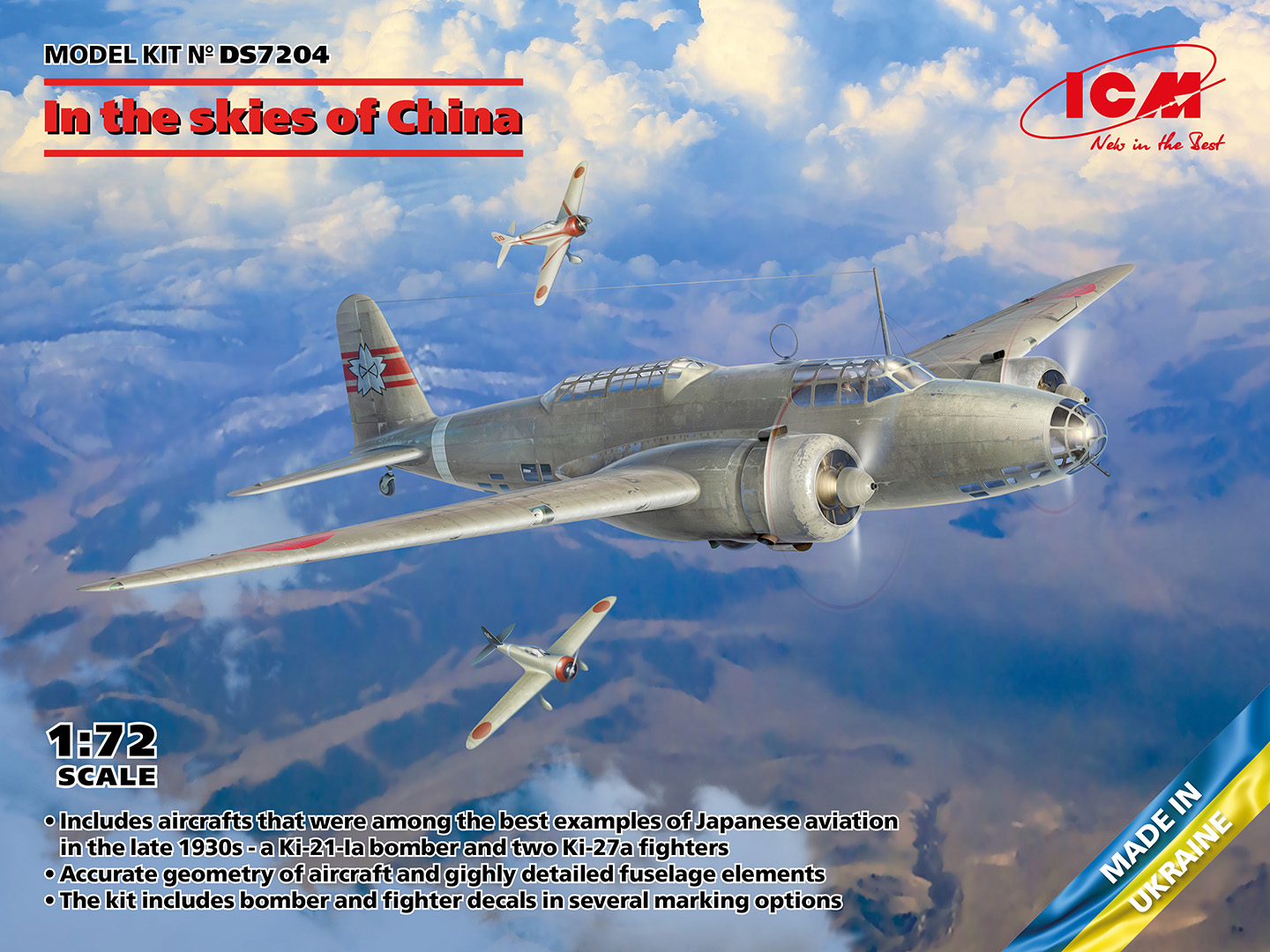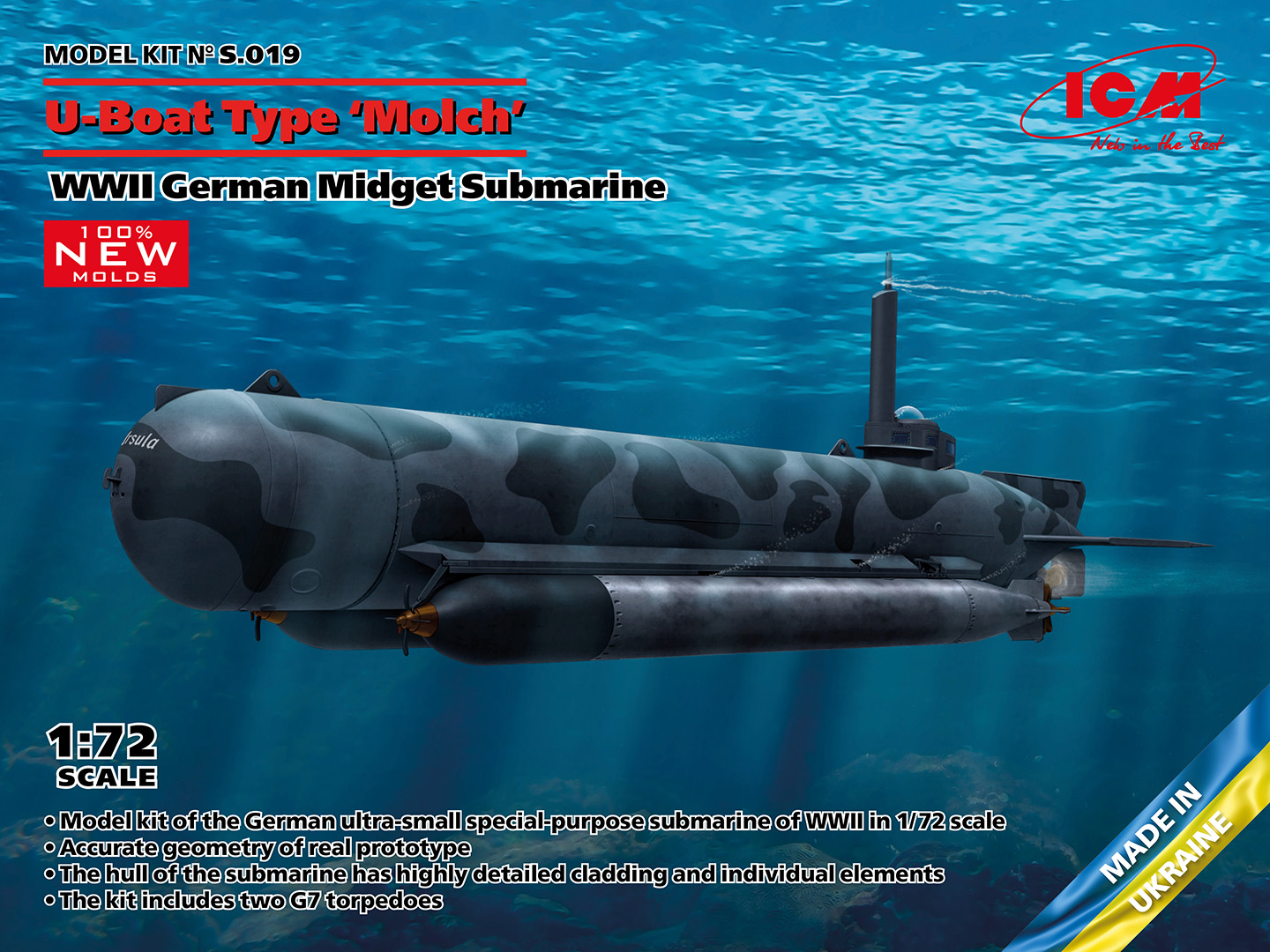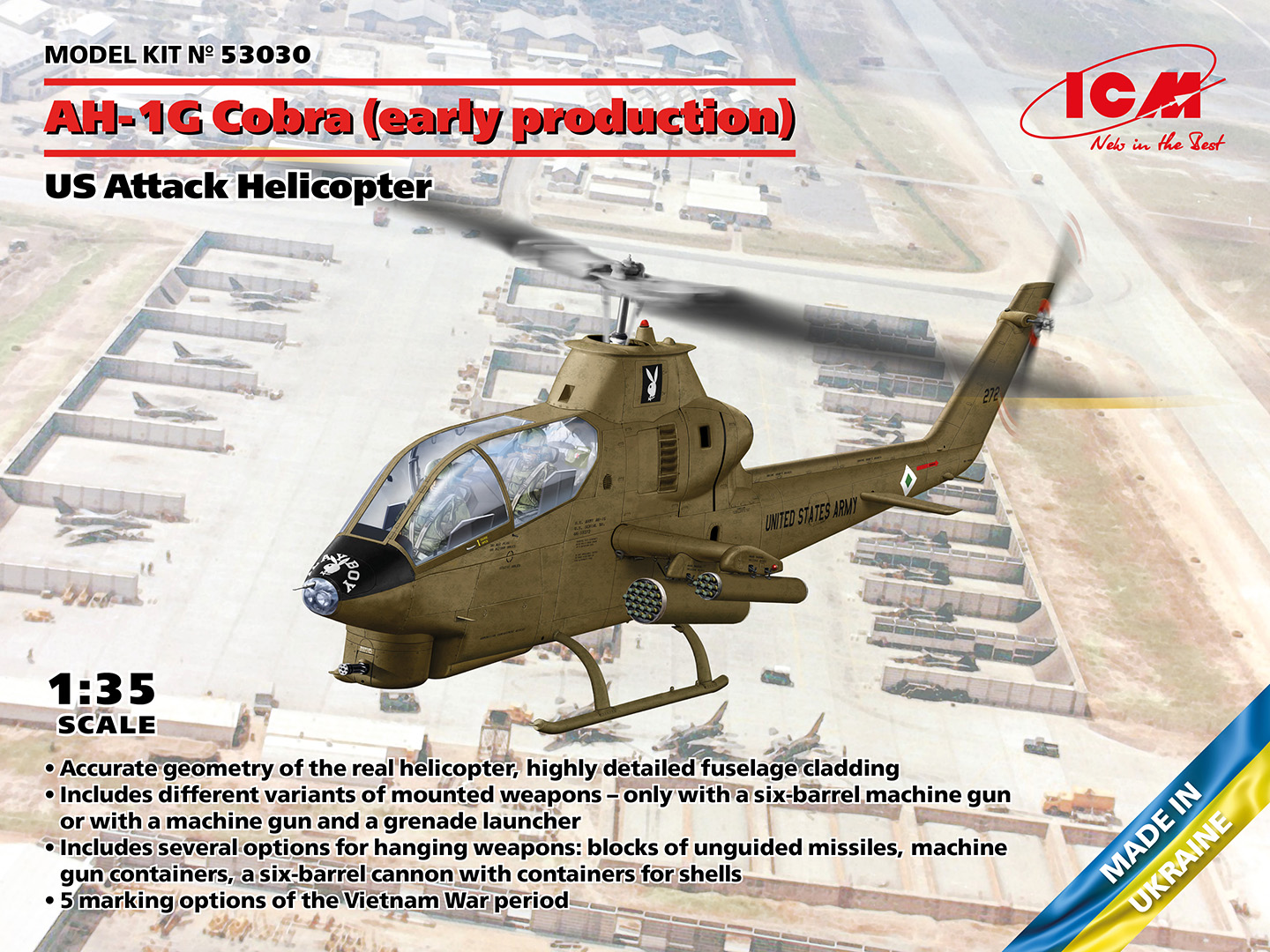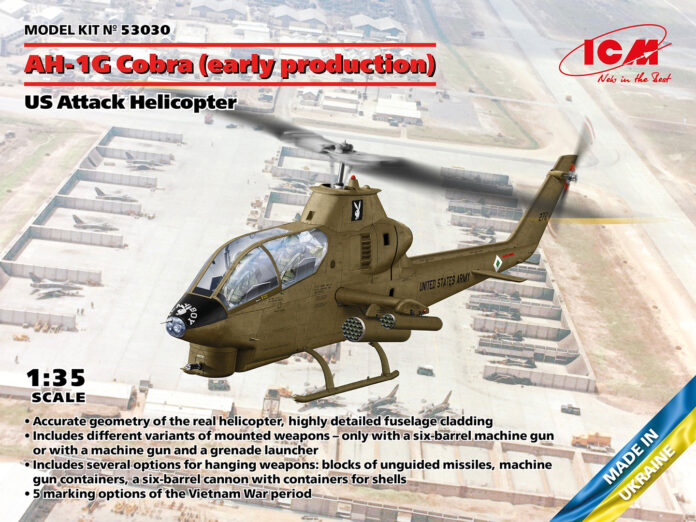 1/72 In the skies of China (Ki-21-Ia, two Кі-27а)
1/72 In the skies of China (Ki-21-Ia, two Кі-27а)
On July 7, 1937, the incident on the Lugouqiao Bridge near Beijing started the Second Sino-Japanese War. From the first days of the invasion, the Japanese navy’s aircraft held the brunt of the attack, and this forced the army air force to increase its supply of aircraft. In the spring of 1938, the Ki-27a fighter appeared in the skies of China. Its combat qualities, combined with the high training of its personnel, allowed the Japanese air force to gain an advantage over the Chinese Air Force. In air battles, the fighter successfully fought Soviet-made I-15 and I-16 aircraft.
Also in 1938, Ki-21-Ia bombers appeared in the Chinese skies, and the 60th Sentai was the
first to receive them. The planes were immediately involved in active combat operations, and their crews managed to develop an effective tactic of use: they maintained a close combat formation in the target area, combining this with mutual fire support.
The Ki-21-Ia bombers also proved to be highly survivable, being able to withstand damage from a large number of conventional caliber bullets. For a certain period of time, these aircraft were the only long-range bombers in the Japanese Army Air Force.
 1/72 U-Boat Type ‘Molch’
1/72 U-Boat Type ‘Molch’
WWII German Midget Submarine
The Molch was a single-seat ultra-small submarine designed for operations in the coastal zone and belonged to the so-called special assault forces. During development, it was designated as “Thomas II”, and production of serial models, known as “Molch”, began in July 1944. The mini-submarine was equipped with a single electric motor for surface and underwater operation, which limited its combat capability. The depth of immersion was up to 60 meters, and the maximum speed in the underwater position was 5 knots. The hull consisted of three sections, with a chair for a single crew member in the center section. The Molch was built at the Deschhimag shipyard in Bremen, and 393 units were produced in total. As part of the special sabotage formation “K”, these submarines were used in the Mediterranean and North Seas, making 140 trips to sea by the end of World War II.
 1/35 AH-1G Cobra (early production)
1/35 AH-1G Cobra (early production)
US Attack Helicopter
The widespread use of multi-purpose helicopters in Vietnam to provide fire support of ground units was the reason for the development of a specialized attack helicopter. Bell began its development in the spring of 1965, and in September, the first prototype became operational. The production AH-1G Cobra began rolling off the assembly line in June 1967, and in the fall of the same year, they began combat operations in Vietnam. The built-in armament of the first production AH-1G Cobras consisted of a six-barrel Minigun mounted in the nose under-fuselage turret. A 40-mm automatic grenade launcher
was later added. The pylons were additionally equipped with blocks with unguided missiles and machine gun containers, and the possibility of suspending a powerful 20-mm six-barrel automatic cannon was added. The gunner in the front seat controlled the fire of the built-in weapons in the nose turret, and the pilot used weapons located on the wing pylons.
Lightweight steel armor with a total weight of 122 kg was used to protect the crew and the most important parts of the structure and units from ground fire.
 1/35 Typ 320 (W142) Soft Top
1/35 Typ 320 (W142) Soft Top
WWII German staff car
The Mercedes-Benz 320, also known as the W142, was developed at the design bureau of Daimler-Benz AG and began production in 1937. It had a six-cylinder engine with a volume of 3.2 liters (3.4 liters in later versions) and 78 horsepower. The model was available with a short (2880 mm) or long (3300 mm) wheelbase and various body styles. The Cabriolet body variant was available in a long wheelbase version. The four-seater version had two doors and four side windows; the roof was soft and could be folded down to protect it from the weather. This vehicle was often seen in the Wehrmacht, with some retaining civilian license plates. It was used as a staff car and was also used to transport senior commanders.
 1/35 “Quietly came, quietly went…”
1/35 “Quietly came, quietly went…”
Special Operations Forces of Ukraine
The modern Special Operations Forces (SOF) of the Armed Forces of Ukraine were created in 2016 on the basis of existing units and subunits, most of which already had some combat experience. As of the summer of 2023, the Ukrainian Special Operations Forces are based on two special purpose regiments – a special purpose maritime center, a special operations center and several other units. Their main tasks include in-depth reconnaissance, combat raids behind enemy lines, search and evacuation of captives or hostages, and anti-terrorist activities. The selection process for Special Forces units is very rigorous, with only 10% of all candidates passing the selection process. Special attention is paid to the equipment of the Special Forces units. The weapons, equipment and facilities include the most modern models, both foreign and Ukrainian, such as the special Vulcan assault rifle, which has been supplied to Special Forces units since 2017. Also in 2020, the Special Operations Forces were the first in the Armed Forces of Ukraine to adopt the structure of NATO army headquarters. During 2022-2023, Ukrainian Special Forces units successfully performed the most difficult combat missions in all areas of combat operations.
HobbyLink International
Hoblylink International Shop
eBay Store



